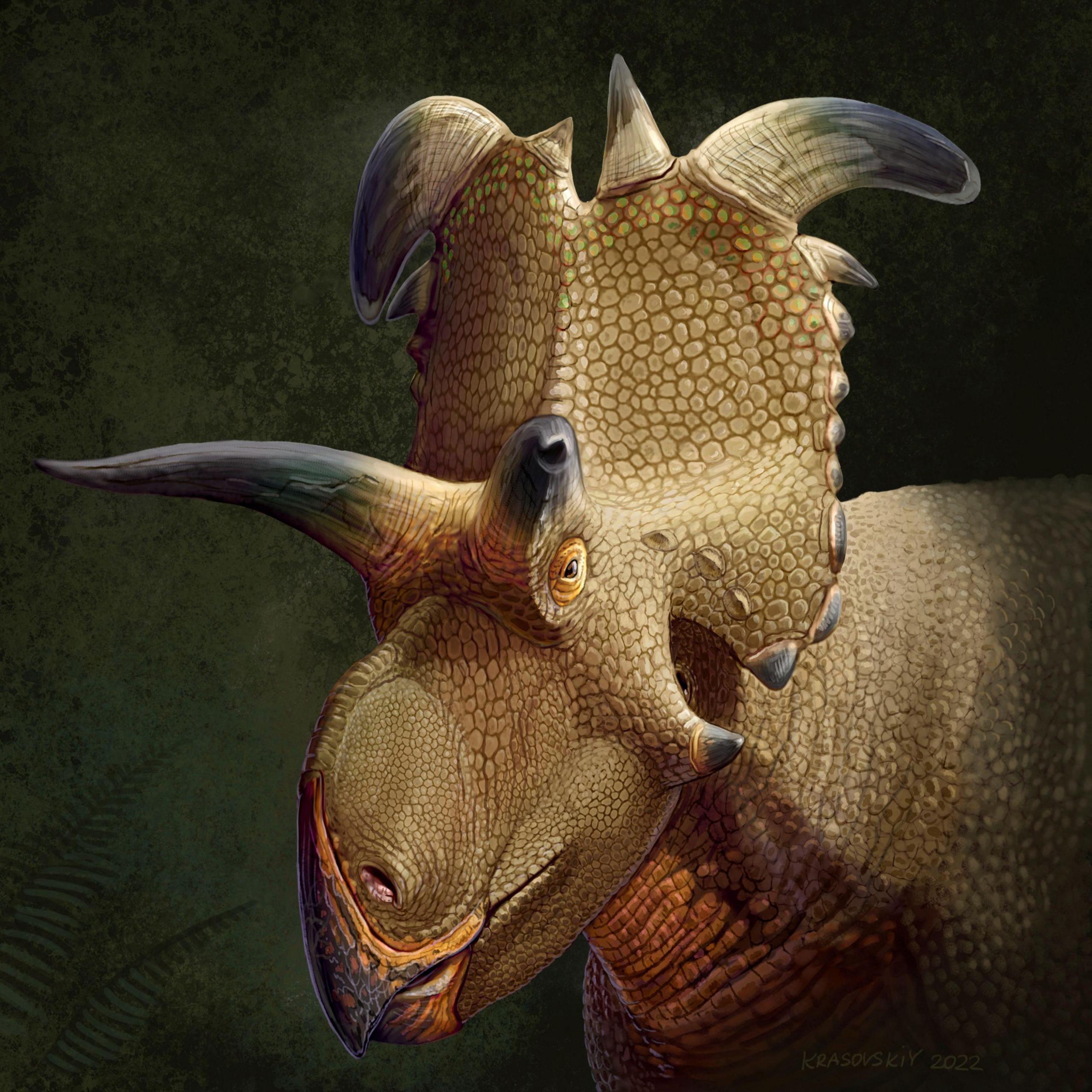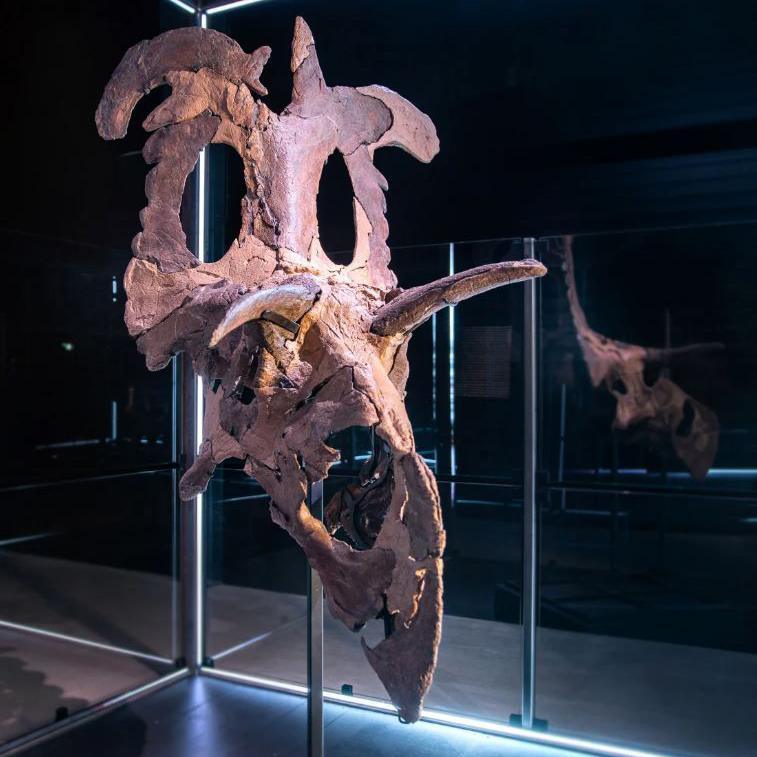New triceratops ancestor with fancy horns discovered

The Lokiceratops had some impressive horns
- Published
A new species of dinosaur, which is an ancient relative of the triceratops, has been discovered by scientists in the US.
The Lokiceratops rangiformis was a huge plant-eating dinosaur with an enormous set of horns and a fancy frill (the bony bit around the top of its head).
It was identified and named by Joseph Sertich, a palaeontologist from the Smithsonian Tropical Research Institute, and University of Utah Professor Mark Loewen.
It gets its name 'Loki' from the Norse trickster god Loki, who used weapons that were similar to the dinosaur's curved horns; 'rangiformis 'comes from the dinosaur’s asymmetric horns - meaning not identical - which are like caribou or reindeer antlers.
First dinosaur named 200 years ago - what have we learned?
- Published14 February 2024
The biggest triceratops skeleton ever discovered is being sold!
- Published3 September 2021
Schoolgirl discovers fossil of huge prehistoric sea reptile
- Published18 April 2024
What was the Lokiceratops like?

The Lokiceratops might have used its fancy frill to find friends or a mate
Scientists think that the Lokiceratops lived around 78 million years ago, in a swampy area of land called Laramidia, which eventually became a northern part of the United States, near Canada.
Although it looks similar to its famous cousin the triceratops, it actually lived about 12 million years earlier, and belongs to a separate group of dinosaurs called centrosaurinae.
It would have had a heavy body, a bit like a rhino, and is thought to have been be around around 6.7 metres long.

Lokiceratops is the biggest species of centrosaurinae ever found in North America, and also has the largest and fanciest frill horns.
Joseph Sertich said: "The horns and frill were most likely used for display in Lokiceratops and other horned dinosaurs. These displays could have been used to intimidate rivals, attract mates or recognize members of the same species."
Where did the fossil come from?

A cast of the Lokiceratops fossil is now on display at the Museum of Evolution in Denmark
The Lokiceratops rangiformis fossil was discovered in Montana in the US in 2019, alongside a number of other fossils.
The fossils were bought by the Museum of Evolution in Denmark, where they are currently on display.
